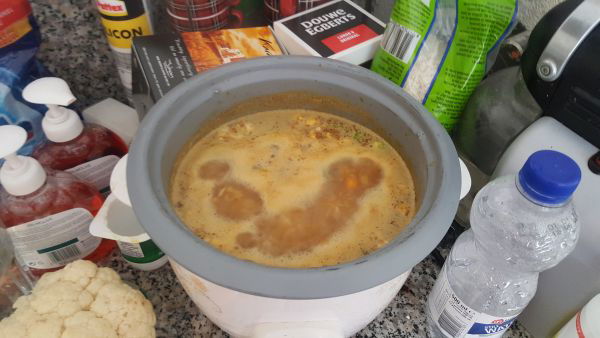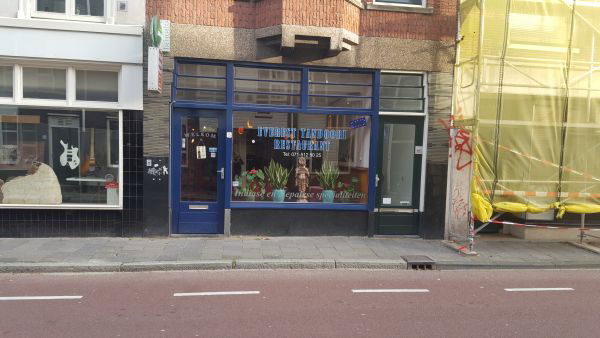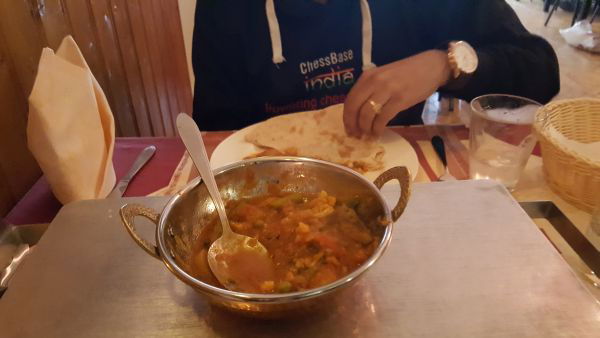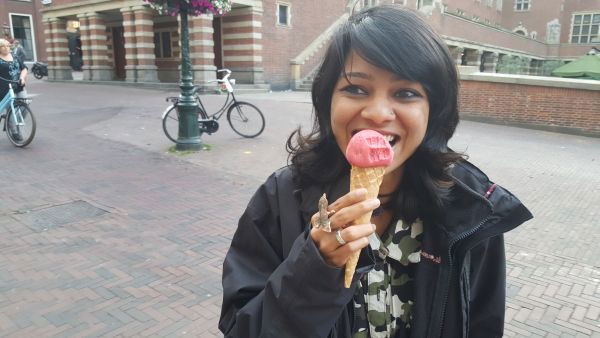Chess and cycling in the city of Leiden!
Sagar Shah and Amruta Mokal played the Leiden Open in Netherlands from 15th-25th of July 2016. It is one of the tournaments they had planned on their 89 day Euro trip. This turned out to be one of the most memorable events because of many reasons - the picturesque city, travelling on bicycle, getting paired against each other in the final round! In this article Sagar gives you a personal view of how foreign tournaments should be enjoyed and how you can make them cost-effective. You cannot emerge victorious in every event that you play, but you can surely make each one memorable!
After our tournament in Porticcio, Corsica which ended in the first week of July, Amruta and I made our way to the Leiden Open. The easiest way to reach Leiden is to take a flight to Amsterdam and from the Schiphol airport you have a direct train that reaches Leiden Central station in 15 minutes.

We reached a week prior to the start of the tournament. This gave us enough time to get acclimatized to the place and weather. On a Saturday morning when Amruta and I were strolling through the unusually crowded and lively market of Leiden we saw a man in his fifties walking with his wife. I tried to recollect the face. I had seen him somewhere. In fact I had even written a report on him. And then it struck me! Predrag Nikolic! It was such a joy to see a legend like him in flesh.

The 10th Leiden Chess Tournament was held from the 15th to 25th of July 2016. It was a nine-round Swiss tournament with the participation of 64 players in the A category (>1900). There was also a B category tournament for players below the Elo of 1950. The schedule of the tournament was excellent with a single round each day and a rest day after five rounds. The time control was one and a half hour for forty moves, with an addition of thirty minutes, and an increment of 30 seconds from move one. Eight grandmasters and eight International Masters and players from fourteen countries took part in the event. The prize fund of the A category was €5,500 with a first prize of €1,750.
If you are interested to read the tournament report, we urge you to do so over here. In it I have written about the entire Leiden tournament, about the winner Roeland Pruijssers and other prize winners. However, in this report I would like to focus on the event from a personal point of view. Give you some details, just in case you are planning to play the event in 2017.

As I have mentioned in the past, the best way for you to live in a city is to book an airbnb apartment. This (above picture) is a personal room that we booked via airbnb website. Renting a personal room is a good idea because it minimizes your cost and at the same time helps you to stay with the locals. Our hosts Eric and Maria were wonderful and we highly recommend staying at their place if you ever visit Leiden.








Another important thing that you must always search when you reach a new city is a good supermarket. If you are going to stay there for a long duration, you will need to replenish day to day foodstuffs. Hoogvliets is an ideal supermarket chain in Leiden.



 This is a picture from the time when Amruta and I had a cooking contest! The vessel on the left was mine and the other one was hers! Naturally she was on course to winning (she is a better cook!), but she added quite a bit of extra salt. We agreed to a draw!
This is a picture from the time when Amruta and I had a cooking contest! The vessel on the left was mine and the other one was hers! Naturally she was on course to winning (she is a better cook!), but she added quite a bit of extra salt. We agreed to a draw!





In the last round I was paired against Amruta. When you open the tournament website to check the pairings and see yourself paired against your wife, it is quite a distressing moment. You have travelled thousands of kilometres to play against different opponents from different countries, but there you are, sitting against your better half! A game that you could have very well played in the comforts of your home! At such points it is possible to take the easy path. Decide on a draw, put your mind at ease and just enjoy the day. Why go through all the stress and nervous tension of playing against someone you love and facing the unenviable task of trying to win against them. But we decided to fight it out. Isn’t that what chess teaches us – to fight the uncomfortable situations and become stronger. During the game I kept in mind the words of Akiba Rubinstein: When asked who he was playing tonight, Akiba replied, "Tonight I am playing against the Black pieces!” In the end I was able to win but it was a very interesting game that could have gone either way.
[Site "?"]
[Date "2016.07.24"]
[Round "9"]
[White "Sagar, Shah"]
[Black "Amruta, Mokal"]
[Result "1-0"]
[ECO "D37"]
[WhiteElo "2433"]
[BlackElo "2078"]
[PlyCount "67"]
[SourceDate "2009.03.06"]
other. The first one was in Zalakaros Open in Hungary in May 2015. This time
in Leiden we were hoping not to be paired against each other. It worked out
fine for eight rounds but in the last round we were finally paired against
each other. My main aim in the game was to play an opening system that we
hadn't discussed or worked on together. And hence I came up with relatively
lesser played variation in the Nimzo Indian.} 1. d4 Nf6 2. c4 e6 3. Nc3 Bb4 4.
e3 O-O 5. Bd3 d5 6. Nf3 c5 7. O-O Nc6 (7... dxc4 8. Bxc4 Nc6 {According to
Sasikiran this is the most accurate move order. Because if you play Nc6 before
dxc4 then you have to play the line that happened in the game. Not such a
tragedy for Black as Amruta was quite happy with the IQP position she got.}) 8.
cxd5 exd5 9. dxc5 Bxc5 10. h3 {I checked an article on the opening
encyclopaedia in the morning for around half an hour and thought that this was
quite interesting. Of course I was always worried about the Ne4xf2 ideas but
after looking them over with the engine I got some idea as to when that
sacrifice is risky and when it isn't.} Qe7 (10... d4 11. Na4 $16) 11. b3 Rd8
12. Bb2 Ne4 (12... d4 13. exd4 Nxd4 14. Na4 Nxf3+ 15. Qxf3 Bd6 16. Rfe1 $14 {
Is definitely slight edge for White.}) 13. Ne2 Nb4 $5 {The start of a highly
original plan by Amruta which deserves due credit. The idea is to push the
pawn to a5 and then get rook the kingside via a6.} (13... Nxf2 14. Rxf2 Bxe3 (
14... Qxe3 15. Ned4 $16) 15. Ned4 (15. Qf1 {And White is better.} Nb4 16. Bb1))
(13... Bf5 {I was expecting this move.} 14. Rc1 $6 (14. Ned4 $1 Bg6 (14... Nxd4
15. Nxd4 Bg6 16. Rc1 Rac8 17. Qe2 (17. Rc2 f5 18. Qc1 $14)) 15. Nxc6 bxc6 16.
Ne5 $14) (14. a3 Nxf2 15. Rxf2 Qxe3 16. Bxf5 Qxf2+ 17. Kh1 Re8 $15 (17... d4
18. Bd3 $14)) 14... Nxf2 $1 15. Rxf2 Bxd3 $1 16. Qxd3 Qxe3 17. Qxe3 Bxe3 $11 {
and Black is fine.}) 14. Bb1 a5 15. a3 Na6 $5 {The knight is placed on c7 so
that it can continuously defend d5.} (15... Nc6 16. Bd3 Bf5 17. Ned4 (17. Nfd4
Bg6) 17... Bg6 18. Nxc6 bxc6 19. Ne5 $14) 16. Nf4 Nc7 17. Nd4 {With this move
I wanted to stop Bf5.} (17. Bd3) 17... Ra6 18. Qd3 {At this point I was
confident that I was doing well as Nxd5 is quite a difficult move to refute.} (
18. Bd3 Rh6 19. Rc1 $16 g5 20. Nh5 g4 21. hxg4 Qh4 22. Bxe4 Bxg4 (22... dxe4
23. Rxc5 $18) 23. Nf5 (23. Bf3 Qxh5) (23. Qxg4+ Qxg4 24. Bf3) 23... Bxf5 24.
Bxf5 Rxh5 25. Qg4+ $18) 18... Re8 $1 (18... f5 {closes the bishop on c8.}) 19.
Rc1 $6 {I didn't quite like the move as soon as I made it. Primiarily because
it weakens the f2 point.} Rh6 $1 20. b4 $1 axb4 21. axb4 Bxb4 (21... Bb6 $5 22.
Nxd5 Qh4 23. Qxe4 Rxe4 24. Bxe4 Bxh3 25. Rxc7 $1) 22. Nf3 (22. Rxc7 $1 Qxc7 23.
Qb5 Qe7 {I saw this and thought Black is safe but just forgot about Nxd5.} 24.
Nxd5 $18) 22... Nf6 (22... Rc6 $1 23. Qd4 (23. Rxc6 bxc6 24. Qd4 Nf6) (23. Nxd5
Rxc1+ 24. Bxc1 Nxd5 25. Qxd5 Nc3 26. Qc4 Nxb1 27. Rxb1 Bd6 $11) 23... Rxc1+ 24.
Bxc1 Bc3) 23. Rxc7 Qxc7 24. Bxf6 gxf6 (24... Rxf6 25. Qxh7+ Kf8 26. Qh8+ Ke7
27. Nxd5+ Kd6 28. Qxe8) 25. Qb5 $1 Re4 26. Bxe4 dxe4 27. Nd5 Qd7 28. Qxb4 Qxd5
(28... exf3 29. Rc1 Kg7 30. Nb6 $18) 29. Nd4 (29. Ra8 exf3 (29... Qc6 $1 $18)
30. Rxc8+ Kg7 31. Qf8+ Kg6 32. Qg8+ Kf5 33. e4+ Kxe4 (33... Qxe4 34. Rc5+ $18)
34. Qg4+) 29... b5 30. Ra7 (30. Rc1 $1) 30... Kg7 (30... Rg6 31. Kh1 (31. Kf1
$5 Kg7) 31... Kg7 32. Qe7 f5 33. Rc7 Be6 34. Qe8) (30... Rh5 31. Qe7 Kg7 32.
Rc7 Re5 $1) 31. Rc7 Bxh3 (31... Be6 32. Qc5 (32. Nxe6+ Qxe6 33. Qxb5) 32...
Qxc5 33. Nxe6+) 32. gxh3 Qg5+ 33. Kf1 Rxh3 34. Ne6+ 1-0

In spite of losing to me, Amruta (above) had a good tournament and won the prize of the best player under 2150 for which she received a DGT 2010 clock, while I finished eleventh in the event and won 40 euros.
It's not always that you can have successful tournaments. But you can always learn from your errors. For me and Amruta, the tournament at Leiden is surely one of the most memorable events of our chess career. And we hope that you were able to benefit by reading about our experience.
Contact of Jan Bey – the tournament organizer
(right click and open in new tab to
get the email address of the organizer)

